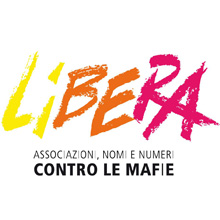 HSIT 380: Cosa Nostra: Cinema and History of the Mafia is a course that covers the emergence of the Mafia phenomenon both in Sicily and America and its continuation in contemporary society, while also looking into how the criminal organization is portrayed and perceived in cinematic fiction. Throughout the course, film is used to supplement historical discourse; however, the course is more than a cinema course, it also includes an engaging opportunity to reach out to the local community through a collaboration with Libera, an Italian anti-Mafia organization.
HSIT 380: Cosa Nostra: Cinema and History of the Mafia is a course that covers the emergence of the Mafia phenomenon both in Sicily and America and its continuation in contemporary society, while also looking into how the criminal organization is portrayed and perceived in cinematic fiction. Throughout the course, film is used to supplement historical discourse; however, the course is more than a cinema course, it also includes an engaging opportunity to reach out to the local community through a collaboration with Libera, an Italian anti-Mafia organization.
Libera was established in 1995 with the purpose of involving and supporting those who are interested in the fight against mafias and organized crime. Thanks to Italian Law n. 109/96, the Italian government is able to seize property from Mafiosi and give it to co-operations such as Libera. One such property is the Col di Pina farm in Pietralunga which Fall 2016 students will be visiting to work alongside Libera staff and volunteers. Their project for this fall will involve harvesting potatoes which will later be used for a fundraising dinner event that students will attend.
“Working with Libera will show students one way to achieve a fusion between academic discourse and activism; students will be trying to ‘better’ the local reality outside of the classroom,” shared HSIT 380 professor, Elgin K. Eckert, as she described her preparations and expectations for the course.
HSIT 380 is also available as an iCourse (the “i” represents an Italian language component and additional academic credit).


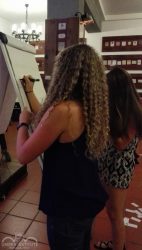 Students learn Italian vocabulary and customs through ice-breaker activities.
Students learn Italian vocabulary and customs through ice-breaker activities.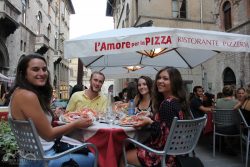
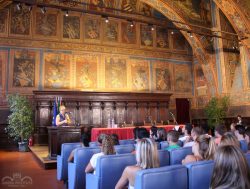
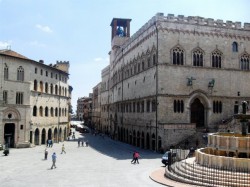 As many have expressed concern for Umbra faculty and staff, we would like to report that the city of Perugia and the Umbra Institute were unaffected by this morning’s earthquake in central Italy.
As many have expressed concern for Umbra faculty and staff, we would like to report that the city of Perugia and the Umbra Institute were unaffected by this morning’s earthquake in central Italy.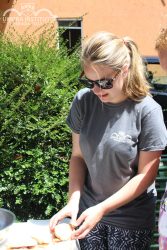 A practicum student getting hands-on experience in the Orto Sinergico
A practicum student getting hands-on experience in the Orto Sinergico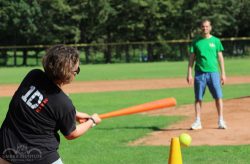
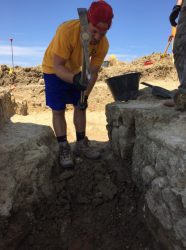 Connor works to uncover tiles
Connor works to uncover tiles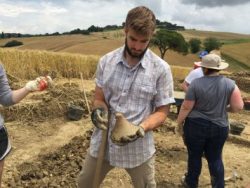
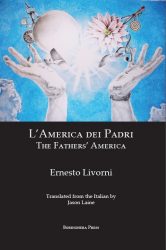 Ernesto Livorni’s book, “The Fathers’ America”
Ernesto Livorni’s book, “The Fathers’ America”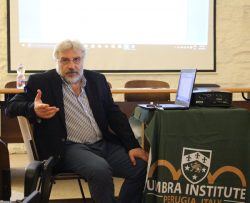
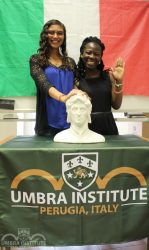 Students swear in for the SoloItaliano Challenge
Students swear in for the SoloItaliano Challenge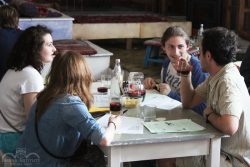
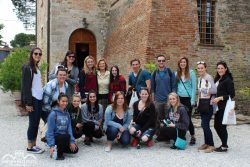 Students pose with Nonna Marcella, author of Goretti’s famous recipe book
Students pose with Nonna Marcella, author of Goretti’s famous recipe book Sawyer presenting the imagery portrayed by cultural symbols throughout time
Sawyer presenting the imagery portrayed by cultural symbols throughout time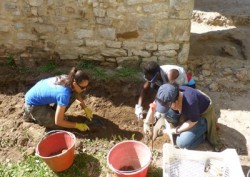 Students work at the previous dig site
Students work at the previous dig site